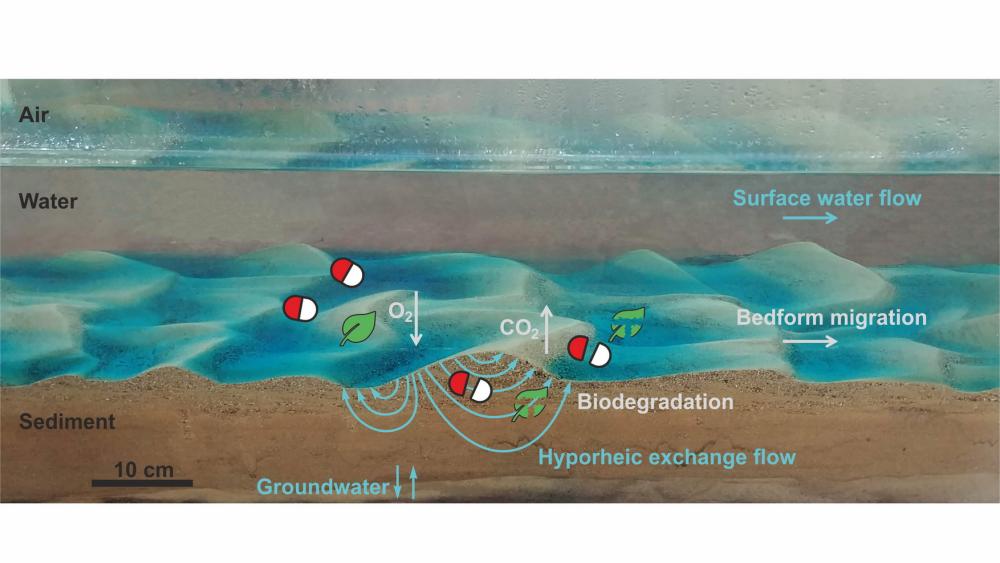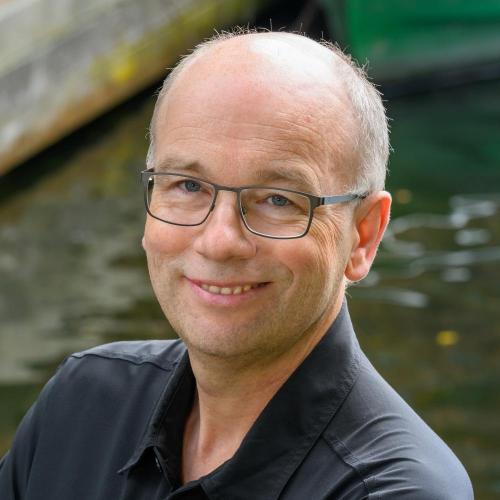Dynamic hyporheic zone
Short profile
Duration

Conceptual figure of processes studied in the project | Image: Hanna Schulz, Jörg Lewandowski, Research group Groundwater-Surface water Interactions / IGB (modified)
Trace organic compounds (TrOCs) are a diverse group of chemicals such as pharmaceuticals, pesticides and personal care products. High TrOC loads occur in lowland streams that receive treated wastewater. These streams are often characterized by fine sediments in which water flow over small bedforms creates pressure differences and water flows into, within and out of the streambed (hyporheic exchange flow). Biotransformation and sorption processes reduce TrOC concentrations in pore water more significantly than in surface water. For many compounds, these processes are strongly redox-dependent, i.e. the water residence time in certain redox zones of the streambed is decisive for TrOC attenuation.
Previous research on biogeochemical processes in streams has focused almost exclusively on stationary bedforms, although bedform migration is common in streams with fine sediments. Bedform migration affects the distribution of flow paths, fluxes, and redox zones within the bed. The project aims to investigate the effects of migrating bedforms on TrOC attenuation and to determine how dynamic flow regimes affect bed mobility and TrOC attenuation.
To answer these questions, field investigations will be combined with flume experiments and modelling. The field investigations are carried out in a sandbed stream (River Erpe, Germany), which receives high loads of treated wastewater including high TrOC concentrations. The experimental setup allows variation of the stream water velocity and thus of the bedform migration celerity. 2D-planar optodes will visualize redox zonation in-situ and enable redox-specific sampling of TrOC concentrations by minipoint samplers. Flume experiments in a unique flume at Ben-Gurion University allow systematic variation of bedform celerity, a dynamic flow regime and thus provide insight into the key processes controlling TrOC attenuation. After the addition of TrOC mixtures to the flume water, time series of their decrease in surface water are measured. The redox zones in the sediment are identified by 2D-planar optodes and sampled by minipoints.
In order to generalize results a reactive TrOC transport model is developed for arbitrarily shaped, transient bedforms. Machine learning is used to predict streambed flux distributions based on existing flume datasets. Flow and reaction parameters are calibrated using flume and River Erpe datasets and then a large-scale Monte Carlo / machine learning study is performed to predict total-system reaction rate from observed parameters. By improving the mechanistic understanding of TrOC attenuation in streams, the proposed research aims to improve long-term predictions of TrOC fate in streams and advance remediation strategies to improve water quality in freshwater systems.
Deutsche Forschungsgemeinschaft
Grant number: LE 1356/7-1




